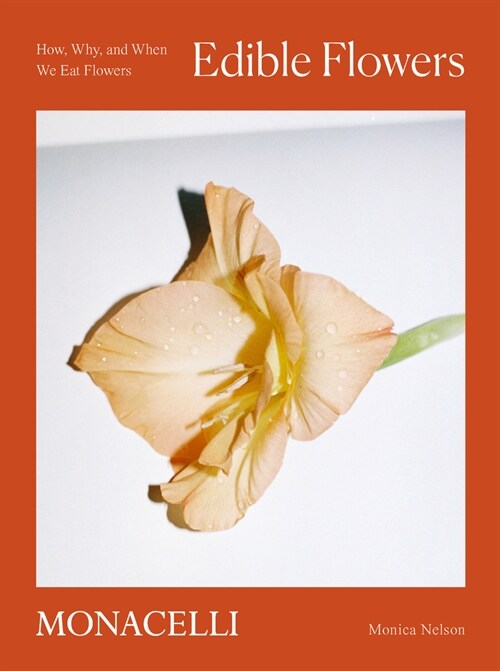
image copyright Adrianna Glaviano
.
If you have any comments, observations, or questions about what you read here, remember you can always Contact Me
All content included on this site such as text, graphics and images is protected by U.S and international copyright law.
The compilation of all content on this site is the exclusive property of the site copyright holder.
Edible Flowers; How, Why and When We Eat Flowers
by Monica Nelson, photographs by Adrianna Glaviano
A book review
Monday, 18 October 2021
I have eaten flowers. You have too, probably, because the large, dark green broccoli we enjoy are the plant's flower head. There are other popular edible flowers too, such as candied violets to decorate a cake, squash blossoms as an ingredient in a delicious Mexican soup. And that means it intrigued me when I heard that Edible Flowers; How, Why and When We Eat Flowers was scheduled for publication early in November.

image copyright Adrianna Glaviano
Opening with a page describing How to Eat Flowers, it recommends obtaining organically grown flowers. If you find some growing on the side of the road be aware plants may have absorbed toxins from car fumes or animal waste. And be certain of what you might be foraging as edible flowers can be difficult to distinguish from toxic relatives. There is a list of two dozen common flowers which should not be eaten.

image copyright Adrianna Glaviano
The book presents 100 flowers, organized alphabetically by their common name. Latin names are provided but in smaller size type. (There is an index page for common names, and another for Lain names at the back of the book.) Other information includes origin, type of plant (forb, flowering shrub, flowering vine), and season of bloom. Entries are quite variable in length: few are more than a page, most are a single page, and some only a paragraph long. Each entry concludes mention of page(s) where the plant's image may be found.
Interesting tidbits include mention of such snippets as lavender oil twice cited in the New Testament as used to anoint Jesus. There might be mention of uses for other parts of a plant - chicory roots as a coffee substitute. It is each entry's concluding sentence that briefly suggests flavor and possible use. An egregious error about goldenrod; we are informed, "The plant was brought west from the Middle East in the sixteenth century . ." The majority of goldenrod species are native to North America including Mexico. One dubious entry - correctly noting that "Only Jasmine sambac, or Arabian jasmine, is edible. All other species of jasmine are poisonous . . ." Safer, perhaps, to have avoided the risk to a non-botanically knowledgeable audience and not include this particular flowering vine.
Following the entry for Zinnia there is a section with a modest number of recipes. Five recipes appear earlier in the book, such as Navajo Tea, which follows the two sentences alloted to that plant on page 160.
Publicity for Edible Flowers mentions that the author, Monica Nelson, is the founding creative and photo director of the influential journal Wilder Quarterly, which is a publication for people enthralled by the natural world. A statement at the back of Edible Flowers notes that "The author of this book is neither a horticulturist or a professional forager." and that flowers mentioned in the text are GRAS (generally recognized as safe) but neither author nor publisher are responsible for adverse reactions.
In addition to recipes, scattered through the book there are short essays, reminiscences from a diverse roster of chefs, artists, and writers mentioning their memories and the use of edible flowers in their lives.

The images are sometimes presented as individual pages adjacent to the specific plant, otherwise images are grouped in signatures. The quality is variable from elegant
with a pairing on one page of water lily and magnolia to

image copyright Adrianna Glaviano
another page that features flying carnations and a camellia

image copyright Adrianna Glaviano
unfocused duo of citrus fruit / flower with citrus flowers and damaged leaves.

image copyright Adrianna Glaviano
Perhaps a horticulturist should have been asked to review the book. Bee balm, Monarda didyma, on page 32 references images on page 38 & 39. Unfortunately those images are of Monarda citriodora, which is an annual. The squash blossom on pages 202 and 209 are of a female flower on immature squash. Since squash have separate male and female flowers the males can be picked and eaten without reducing the quantity of squash produced.
The focus for this book is interesting and intriguing. Though uneven, it should appeal to people who want a pleasant book to widen their exploration of the natural world. However Edible Flowers; How, Why and When We Eat Flowers is not a book I would suggest to anyone who wants to actually eat flowers.
Edible Flowers; How, Why and When We Eat Flowers
by Monica Nelson, photographs by Adrianna Glaviano
published by Monacelli Press
Hardcover, ISBN: 978-1-58093-571-5
published 2021, $35
A review copy of this book was provided by the publisher.
Back to Top
Back to Book Reviews 2021
Back to October
Back to the main Diary Page